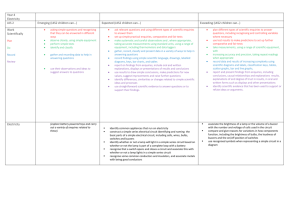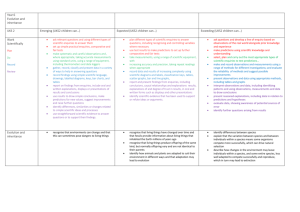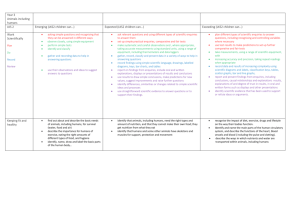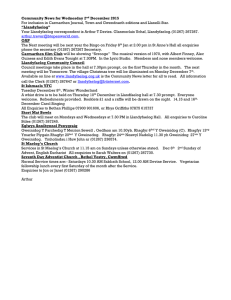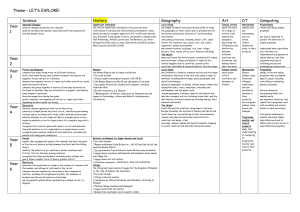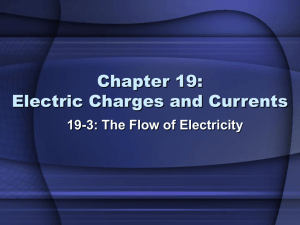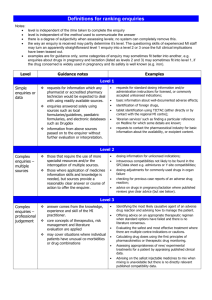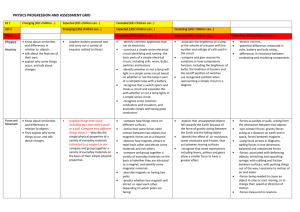Year 6 Electricity grid
advertisement
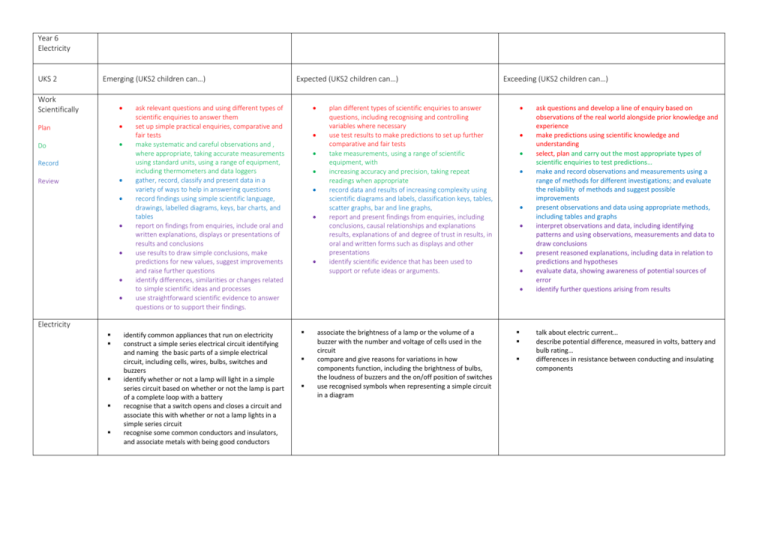
Year 6 Electricity UKS 2 Emerging (UKS2 children can…) Work Scientifically Plan Do Record Review ask relevant questions and using different types of scientific enquiries to answer them set up simple practical enquiries, comparative and fair tests make systematic and careful observations and , where appropriate, taking accurate measurements using standard units, using a range of equipment, including thermometers and data loggers gather, record, classify and present data in a variety of ways to help in answering questions record findings using simple scientific language, drawings, labelled diagrams, keys, bar charts, and tables report on findings from enquiries, include oral and written explanations, displays or presentations of results and conclusions use results to draw simple conclusions, make predictions for new values, suggest improvements and raise further questions identify differences, similarities or changes related to simple scientific ideas and processes use straightforward scientific evidence to answer questions or to support their findings. Electricity Expected (UKS2 children can…) identify common appliances that run on electricity construct a simple series electrical circuit identifying and naming the basic parts of a simple electrical circuit, including cells, wires, bulbs, switches and buzzers identify whether or not a lamp will light in a simple series circuit based on whether or not the lamp is part of a complete loop with a battery recognise that a switch opens and closes a circuit and associate this with whether or not a lamp lights in a simple series circuit recognise some common conductors and insulators, and associate metals with being good conductors Exceeding (UKS2 children can…) plan different types of scientific enquiries to answer questions, including recognising and controlling variables where necessary use test results to make predictions to set up further comparative and fair tests take measurements, using a range of scientific equipment, with increasing accuracy and precision, taking repeat readings when appropriate record data and results of increasing complexity using scientific diagrams and labels, classification keys, tables, scatter graphs, bar and line graphs, report and present findings from enquiries, including conclusions, causal relationships and explanations results, explanations of and degree of trust in results, in oral and written forms such as displays and other presentations identify scientific evidence that has been used to support or refute ideas or arguments. associate the brightness of a lamp or the volume of a buzzer with the number and voltage of cells used in the circuit compare and give reasons for variations in how components function, including the brightness of bulbs, the loudness of buzzers and the on/off position of switches use recognised symbols when representing a simple circuit in a diagram ask questions and develop a line of enquiry based on observations of the real world alongside prior knowledge and experience make predictions using scientific knowledge and understanding select, plan and carry out the most appropriate types of scientific enquiries to test predictions… make and record observations and measurements using a range of methods for different investigations; and evaluate the reliability of methods and suggest possible improvements present observations and data using appropriate methods, including tables and graphs interpret observations and data, including identifying patterns and using observations, measurements and data to draw conclusions present reasoned explanations, including data in relation to predictions and hypotheses evaluate data, showing awareness of potential sources of error identify further questions arising from results talk about electric current… describe potential difference, measured in volts, battery and bulb rating… differences in resistance between conducting and insulating components
